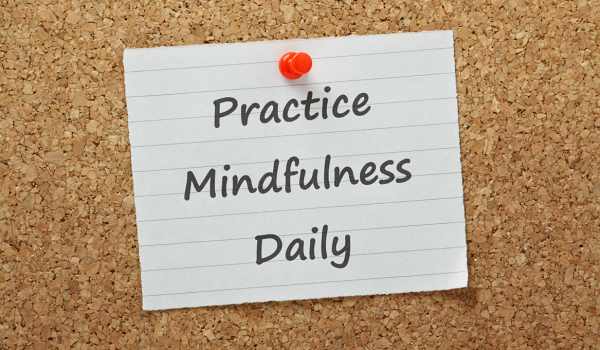
The workplace often operates at a high speed in a competitive environment that can occasionally be stressful. It demands top-notch performance, productivity, focus, and the ability to collaborate effectively with colleagues, management, and clients.
That is where the practice of meditation and mindfulness plays a crucial role. It can help you reduce stress, become less reactive, and enhance your sense of compassion while simultaneously strengthening your focus, productivity, and resilience.
The benefits of mindfulness aren’t limited to employees alone. Management and leaders also stand to gain from incorporating meditation into their routines. It enables them to cultivate a heightened sense of awareness, clarity, and compassion, which, in turn, influences how they lead their company or team.
Browse our online courses on meditation, positive thinking, overcoming procrastination, confidence, and freedom from distractions.
Furthermore, they often observe increased productivity and decreased stress-related health issues among their staff. Thus, a workplace that embraces and integrates mindfulness benefits everyone involved.
What Is Mindfulness?
Mindfulness is consciously engaging in the present moment, whether in a personal or professional environment. It entails fostering a heightened awareness of both your inner thoughts and external surroundings and your interactions with others.
At its core, mindfulness is all about being deliberate and intentional. Whether you’re practicing mindfulness at home or in the workplace, its aim is the same – to enhance your personal growth and become a better version of yourself.
People who attempt to juggle multiple tasks simultaneously often find themselves less efficient compared to when they concentrate on one task until its completion. This scenario is where mindfulness becomes relevant.
People who have received training in mindfulness show an improved awareness of the inner workings of their minds. They gain insights into how their filters influence their perceptions and subsequently affect their decisions.
The Benefits of Mindfulness in the Workplace
Notable corporations like Nike, Google, and Apple have adopted mindfulness in their workplaces for a good reason – the benefits are remarkable. Mindfulness offers advantages for individuals at all organizational levels.
Whether you’re a leader seeking a competitive edge, an HR professional prioritizing employee well-being, or an employee striving to improve performance, mindfulness can be transformative.
In practice, it means focusing on your thoughts and sensory experiences rather than dwelling on the past or fixating on the future. This present-moment awareness has proven to be a valuable asset in the workplace.
With these points in mind, here are the top benefits of incorporating mindfulness into the workplace:
Limit Stress
Workplace stress is prevalent, with 76 percent of professionals experiencing moderate to high stress levels. Mindfulness is a valuable tool for managing stress. It equips employees with the skills to handle stress by regulating their reaction to pressure.
Research confirms its effectiveness in lowering psychological symptoms, emotional reactivity, and stress-related physical effects, ultimately enhancing employee resilience and well-being.
Better Focus
Our brains can be like an old-style radio, receiving numerous competing signals simultaneously. Trying to tune into all of them simultaneously hinders our focus. People think about something other than the task, reducing productivity and well-being.
Workplace mindfulness practices enable workers to live in the present, sharpening their focus and improving work performance through sustained attention and concentration. You may consider installing a double recliner or two in the office to help facilitate mindful breaks.
Improved Communication
Successful workplace communication, especially in supportive roles, is essential. Mindfulness in the corporate environment enhances self-awareness and awareness of others, allowing individuals to think before they speak.
These skills are crucial for effective and emotionally intelligent communication, enabling leaders to convey humility, empathy, and authenticity, eliciting positive responses from others.
Enhanced Productivity
In a typical workday, employees grapple with multiple deadlines, distractions, and stressors vying for their attention. Multitasking, while common, could be more counterproductive.
Mindfulness encourages us to focus on one task at a time, transitioning from multitasking to single-tasking. This shift enhances efficiency, productivity, and work quality, easily improving performance.

Practical Strategies for Applying Mindfulness to the Workplace
Try these mindfulness exercises to experience increased presence, vitality, and productivity in your work.
Mind Your Breathing
A straightforward breathing exercise can significantly affect your mental state and is a discreet way to practice mindfulness at work. Whenever stress creeps in during the workday, spare a minute to inhale and exhale deeply, sensing your tension easing.
A simple example of this exercise is to sit on a chair, close your eyes, and start breathing in and out. Using a double recliner, you can engage in mindful breathing exercises. By reclining comfortably, you can focus on your breath and clear your mind, enhancing your present-moment awareness and reducing workplace stress.
Take Breaks
Many people believe they can’t afford the time for breaks, but a productivity study revealed that the most productive employees worked in cycles of 52 minutes followed by a 17-minute break.
The brain naturally operates at high activity for about an hour. Then, it requires a brief period of low activity, making it an ideal time for a mindful break.
Set a timer to remind you to take hourly breaks, even for a minute. You can use this time for simple mindfulness practices like breathing exercises, short meditation, sitting on a double recliner chair, or simple walking. These breaks can be incredibly refreshing after lunch when your mind starts to fatigue.
Limit Email Checks
Email often acts as a persistent distraction, diverting attention from critical tasks. Turn off push notifications and reserve specific, uninterrupted times to check email.
When you open your inbox, prioritize important matters and discern what’s just noise. This practice can significantly enhance your focus and productivity.
Practice Active Listening
Instead of merely waiting for your turn to speak, strive to be fully present and attentive when colleagues are talking. Learn to silence the internal chatter in your mind and create space to process what your coworkers are saying.
This practice can lead to improved relationships in the workplace and enhance your understanding of others’ perspectives.
Practice an Attitude of Gratitude
Transform difficult workdays into opportunities for mindfulness. To improve your mood at work, consider incorporating gratitude meditation when your spirits are low.
Write down one or two things you appreciate about your job, even when things aren’t going as planned. This practice can help you cultivate gratitude and a positive perspective on your job.
Learn About Our Online Meditation Course
Various meditation techniques for finding inner peace, expanding consciousness, and awakening.
Mindful Unwinding While Commuting
It’s essential to unplug and set boundaries to transition from work to home life. Your commute can facilitate this shift. Turn off your phone, radio, or other distractions and immerse yourself in the moment.
Observe your surroundings and concentrate on your breathing. If work-related thoughts or stress emerge, acknowledge them and then release them, allowing yourself to unwind mindfully.
Start a Wellness and Mindfulness Campaign
There are three ways to promote mindfulness in the workplace. First, consider launching a mindfulness campaign or challenge, which can be facilitated by a wellness vendor if available.
These campaigns employ videos and interactive elements to teach participants mindfulness practices, including deep breathing, gratitude, mindful walks, meaningful interactions, language awareness, and qualities like presence, patience, and compassion.
Second, you can invite a mindfulness speaker or host a lunch and learn session to educate employees about mindfulness.
Lastly, you can update your wellness incentive system to reward employees who complete mindfulness challenge presentations or incorporate mindfulness into their daily routines, thus promoting a culture of mindfulness in the workplace.
Start Your Mindfulness Journey Today
The path to mindfulness begins with recognizing the value of the present moment over dwelling in the past or future. A great way to start your mindfulness journey is by embracing deep breathing and honing your focus on one thing at a time while working.
This newfound focus can lead to heightened productivity, enhanced creativity, increased patience, and improved understanding. The benefits of mindfulness in the workplace are within your reach, so why not begin your mindfulness routine today?

